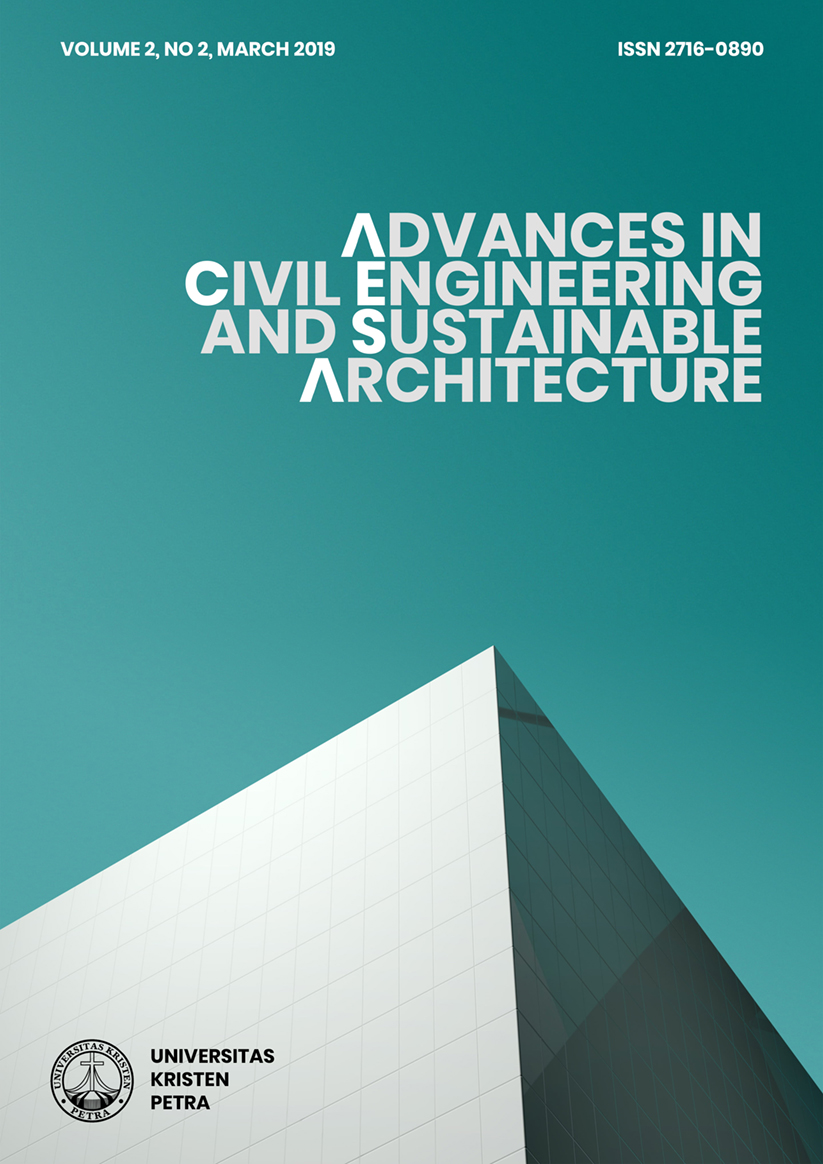The Setting of Communal Spaces in an Apartment through the Indonesian Architectural Regionalism Approach in Kampung Keputran Pasar Kecil, Surabaya
DOI:
https://doi.org/10.9744/acesa.v2i2.9961Keywords:
database, dashboard, monitoring, productionAbstract
The aim of the study is to identify the ideal layout of communal spaces
in an apartment through the design approach of Indonesian architectural
regionalism in kampung. Kampung Keputran Pasar Kecil in Surabaya is the locus
of study. The relocation of the kampung to vertical houses, which are not suitable
to the cultural context of life in kampung. This problem then leads to the
disappearace of some places in kampung-lifestyle’s identities and decreases the
quality of social and economic life of the apartment’s habitants. Qualitative
analysis by the identification and reinterpretation of spaces’ and places’ values
are used as the research methods which the form of elements of spaces and places
required, based on the needs of the habitants of kampung; then spaces
conceptualizing in accordance to the regionalism context of kampung and
authorized regulations; and design simulation is done based on kampung
existence as the final result of the study.
References
1. Handinoto, Perkembangan Kota dan Arsitektur Kolonial Belanda di Surabaya (1870 –
1940), Andi dan Lembaga Penelitian dan Pengabdian Kepada Masyarakat Universitas
Kristen Petra Surabaya, Yogyakarta, 1996.
2. Setiawan B., Kampung Kota dan Kota Kampung, Potret Tujuh Kampung di Kota Jogja,
Pusat Studi Lingkungan Hidup, Universitas Gajah Mada, Yogyakarta, 2014.
3. Damayanti R., Extending Kevin Lynch’s Theory of Image ability Through An Investigation
of Kampungs in Surabaya, Indonesia”, Unpublished Doctoral Thesis of The University of
Sheffield, 2015.
4. Republik Indonesia, Peraturan Menteri Pekerjaan Umum No. 05/ Prt/ M/ 2007 tentang
Pedoman Teknis Pembangunan Rumah Susun Sederhana Bertingkat Tinggi, Sekretariat
Negara, Jakarta, 2007.
5. Sunaryo R G., Soewarno N., Ikaputra and Setiawan B. (20 November 2010). “Posisi
Ruang Publik Dalam Transformasi Konsepsi Urbanitas Kota Indonesia”, Proceedings of the
Seminar Nasional Bidang Ilmu Arsitektur dan Perkotaan Morfologi – Transformasi Dalam
Ruang Perkotaan Yang Berkelanjutan Semarang, 20 November 2010, Semarang, November
2010, pp. 87 - 94
6. Istiqomah N., Dampak Relokasi Permukiman Terhadap Kondisi Sosial dan Ekonomi
Masyarakat di Rumah Susun Jatinegara Barat, Unpublished Undergraduate Thesis of
Universitas Islam Negri Syarif Hidayatullah, 2019.
7. Hidayatun M. I., Jatidiri Arsitektur Indonesia: Regionalisme dalam Bhinneka Tunggal Ika,
Universitas Kristen Petra, Surabaya, 2018.
8. Trancik R., Finding Lost Space: Theories of Urban Design, Van Nostrand Reinhold
Company, Inc., New York, 1986
9. Nugroho A. C., “Kampung Kota Sebagai Sebuah Titik Tolak Dalam Membentuk Urbanitas
dan Ruang Kota Berkelanjutan”, Jurnal Rekayasa, Vol. 13, 2018, pp. 209 – 218.
10. Republik Indonesia, Peraturan Menteri Dalam Negeri Nomor 9 Tahun 2009 tentang
Pedoman Penyerahan Prasarana, Sarana, dan Utilitas Perumahan dan Permukiman Di
Daerah, Sekretariat Negara, Jakarta, 2009.
11. Chandra, H. J., and Sunaryo, R. G., “Gang Sebagai Pusat Nilai Lokalitas Kehidupan
Masyarakat Kampung Kota”, Presented for the 4th Seminar on Architecture Researchand
Technology, Yogyakarta, 2019
12. Republik Indonesia, Undang-Undang Republik Indonesia nomor 20 tahun 2011 Tentang
Rumah Susun, Sekretariat Negara, Jakarta, 2011.
13. Groat , L. N. and Wang, D., Architectural Research Methods, 2nd edition, John Wiley &
Sons, Inc, Hoboken, 2013
Downloads
Published
Issue
Section
License
Authors who publish with this journal agree to the following terms:
Authors retain copyright and full publishing rights without restrictions, with the work simultaneously licensed under the terms and conditions of the Creative Commons Attribution License (CC BY) that allows for unlimited use, distribution, and content reproduction on all media as long as the original author and source are properly acknowledged and cited.











